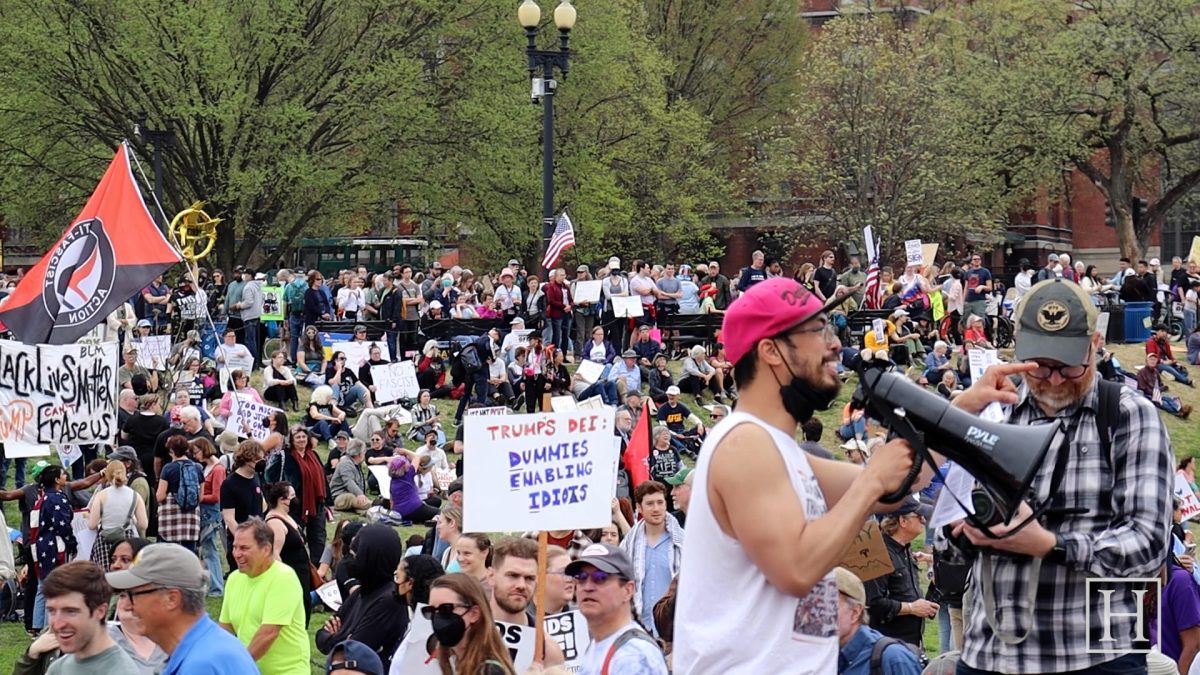Bonn, Germany
The year is 1945. More than 7 million German soldiers and civilians are dead. More than 15 million Germans have been expelled from former German territories, and they are now refugees. Germany is without a government and is occupied by the Allied powers. Germany’s cities and towns lie in ruins. Food is scarce. Photos from the concentration camps show the world – and the Germans – the horror of Hitler’s death camps, where millions of innocents lost their lives.
After 13 years of the Nazi regime and six long years of war, Germany was a broken nation.
So began our tour of the House of German History in Bonn.
Former German Chancellor Helmut Kohl first proposed a museum of German history in the 1980s, when Germany was still divided between the democratic Federal Republic of Germany in the west and the socialist and markedly undemocratic German Democratic Republic in the east. Kohl envisioned a museum dedicated to Germany’s struggle to pull itself out of the rubble of the war in order to form a new democracy – it was not an easy journey.
As Americans, we learn all about Germany during the war, as we should. But what about Germany after the war? How did the Nazi Germany that murdered millions turn into the Germany where I am studying today?
Our tour guide walked us through the powerful exhibits that chronicle the painful years after the war. We saw pictures of entire towns completely leveled by Allied bombing. The lucky ones that survived the bombings were left with nothing.
In the years right after the war many towns had no stores and the currency had practically no value. For many Germans one bowl of soup and one slice of bread had to feed an entire family for a day.
While food and supplies of all kinds were difficult to come by, Germany did have one thing in abundance – leftover military equipment.
The Germans turned army helmets into colanders, parachutes into clothes and hollowed- out bombshells into bowls. Used bullets served as toys for young Germans, who played in the rubble of their hometowns.
For many Germans, the care packages dropped by the Americans were the only thing that kept them from starving.
A few steps farther brought us to the filing cabinets that house thousands of notecards used to document unclaimed children after the war. Many German toddlers were orphaned, and many were too young to even know their names, so they were given up for adoption. Our guide said many visitors tear up at that portion of the tour and say, “I am one of those children. To this day I do not know who I really am or who my parents are.” These lost children carry the scar of the war with them daily, just like the survivors of the concentration camps.
Throughout the exhibit stark black pillars document Germany’s struggle to deal with its Nazi past. The pillars begin by detailing the systematic persecution of the Jews and other minorities by documenting the atrocities committed in the concentration camps and by exploring the continued sense of guilt that exists here to this very day.
Year by year, the museum traces how West Germany slowly came to grips with its past and tried to start anew. The Germans wrote a new constitution and established a strong federal system. With the help of the Marshall Plan, the West German economy roared to life in the 1950s in the so-called economic “wunder.” The journey culminated in the fall of the wall in 1989 and the ensuing reunification during the nineties.
After leading through Germany’s long and painful postwar journey, our guide led us to the end of the exhibit and asked, “What will your children ask you about? What moments in history are burned into your memory?”
“Hurricane Katrina could very well be a sign of global climate change. What will you say when you kids ask, ‘Why didn’t you do anything to stop global warming?” asked the guide.
Looking at pictures of the concentration camps and the destruction Nazi Germany brought upon itself, it is easy to ask that same question of the Germans who were not Nazis. Why didn’t they do something?
The lesson of the Holocaust and the entire Nazi saga is not just to be on guard against genocide. It is also a broad lesson about our responsibility not only to the past, but also to history in the making.
It is often easier to go with the flow of history than to try and fight against it. While many Germans did not support the Nazis, too many looked the other way. They accepted what was going on, and they paid a heavy price.
Our guide asked us point blank, “What is your generation ignoring?”
Tough question. There may not be a Holocaust going on in America, but what about in Africa? Or what will the lasting effects of the Iraq war be? What will happen if the climate scientists are right and we find ourselves on a drastically different planet in 50 years?
I went to the House of History expecting to see some neat pictures, learn some interesting facts and figures, and enhance my understanding of German history. I now realize that the purpose of the museum is not only to teach visitors about German history, but it is also a way for the Germans to teach the world the lessons they have learned. Inaction and complacency can be incredibly dangerous.
So, what are you doing to affect the history that is being written today?




